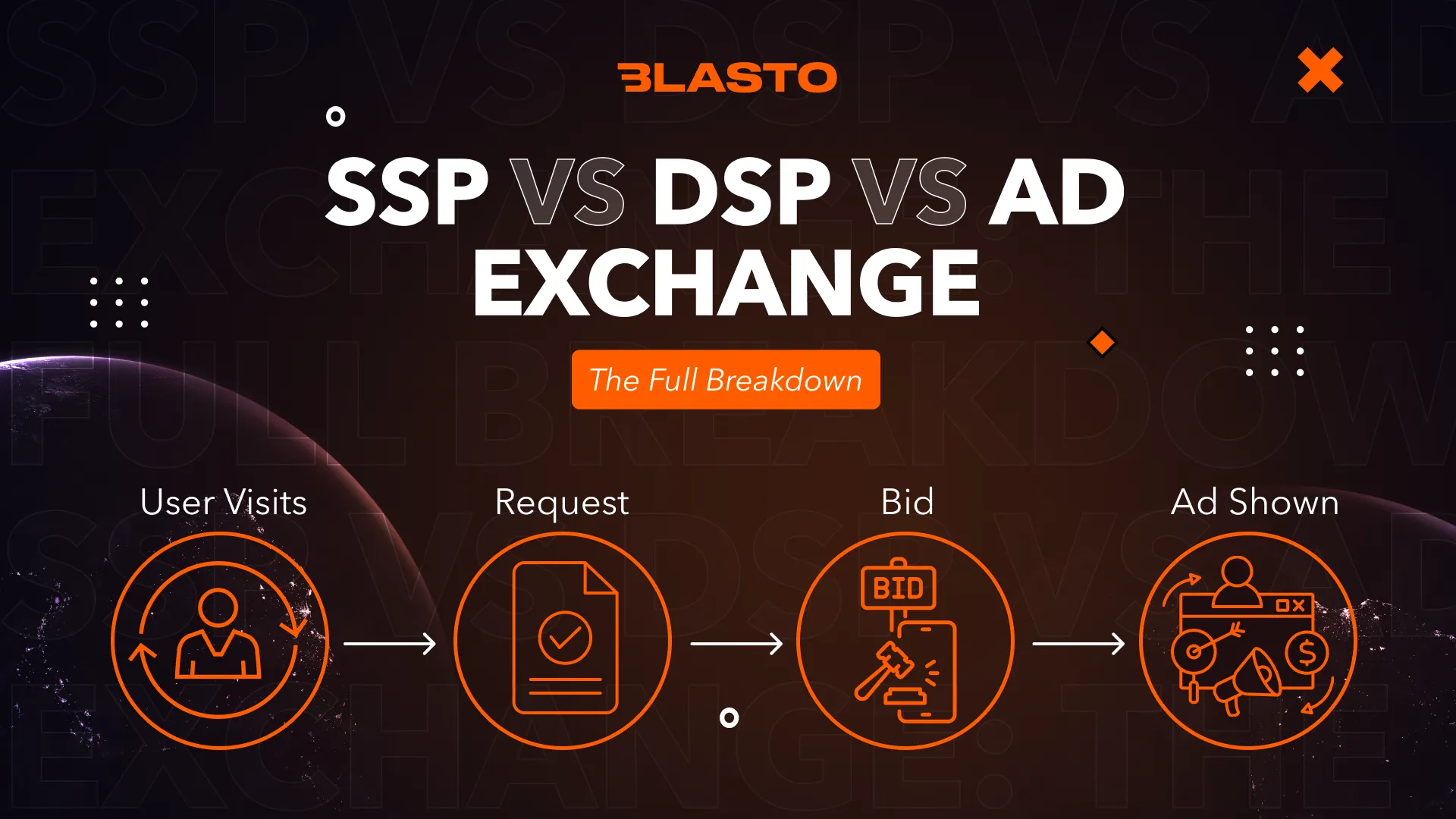SSP vs DSP vs Ad Exchange: A Complete 2025 Guide to Programmatic Advertising

Programmatic advertising is booming. But are you really using it right?
In 2024, U.S. advertisers poured nearly $338 billion into programmatic display ads — yet many still struggle to understand what exactly happens behind the scenes. Terms like SSP, DSP, and Ad Exchange get thrown around, but confusion leads to wasted budget, poor targeting, and missed growth opportunities.
Whether you’re a marketer, publisher, or ad ops specialist, this guide breaks it all down. You’ll learn what these platforms do, how they work together in real-time bidding (RTB), and how to finally make programmatic work for you, not against you.
What Is a Supply-Side Platform (SSP)?
A Supply-Side Platform (SSP) is a technology platform used by publishers to manage, sell, and optimize their available ad inventory. SSPs enable publishers to connect their inventory to multiple ad exchanges and DSPs, thereby maximizing revenue by allowing multiple buyers to bid on their ad space.
Key Features of SSPs:
Inventory Management: Organize and categorize ad spaces available for sale.
Yield Optimization: Adjust pricing and availability to maximize revenue.
Real-Time Bidding (RTB) Integration: Facilitate real-time auctions for each ad impression.
Reporting and Analytics: Provide insights into ad performance and revenue generation.
Examples of SSPs:
Google Ad Manager
Magnite
PubMatic
OpenX
What Is a Demand-Side Platform (DSP)?
A Demand-Side Platform (DSP) is a system that allows advertisers and agencies to automate the purchasing of digital ad inventory across multiple sources. DSPs enable advertisers to buy impressions in real-time, targeting specific audiences based on data such as demographics, behavior, and location. citeturn0search2
Key Features of DSPs:
Audience Targeting: Utilize data to reach specific user segments.
Bid Management: Set parameters for bidding strategies and budgets.
Cross-Platform Buying: Purchase ad inventory across various websites and apps.
Performance Tracking: Monitor and optimize ad campaign effectiveness.
Examples of DSPs:
The Trade Desk
MediaMath
Amazon DSP
Google Display & Video 360
What Is an Ad Exchange?
An Ad Exchange is a digital marketplace that facilitates the buying and selling of ad inventory between publishers (via SSPs) and advertisers (via DSPs). It operates as a neutral platform where ad impressions are auctioned in real-time, allowing the highest bidder's ad to be displayed. citeturn0search2
Key Functions of Ad Exchanges:
Real-Time Auctions: Conduct instantaneous bidding for each ad impression.
Transparency: Provide clear information on pricing and inventory.
Efficiency: Streamline the process of matching buyers and sellers.
Examples of Ad Exchanges:
Xandr (formerly AppNexus)
OpenX
Google Ad Exchange
SSP vs. DSP vs. Ad Exchange: Understanding the Differences
While SSPs, DSPs, and Ad Exchanges are integral to programmatic advertising, they serve distinct roles:
SSP (Supply-Side Platform): Used by publishers to sell ad space.
DSP (Demand-Side Platform): Used by advertisers to buy ad space.
Ad Exchange: The marketplace where SSPs and DSPs transact.
In essence, SSPs help publishers maximize revenue from their ad inventory, DSPs assist advertisers in efficiently reaching their target audiences, and Ad Exchanges connect the two, facilitating real-time transactions.
How They Work Together in Real-Time Bidding (RTB)
Real-Time Bidding (RTB) is the process that enables the automated buying and selling of ad impressions through real-time auctions. Here's a simplified step-by-step overview:
User Visits a Website: A user accesses a publisher's website, triggering an ad request.
SSP Sends Bid Request: The SSP sends the ad impression details to an Ad Exchange.
Ad Exchange Conducts Auction: The Ad Exchange forwards the bid request to multiple DSPs.
DSPs Evaluate and Bid: Each DSP assesses the impression's value based on the advertiser's targeting criteria and submits a bid.
Winning Bid Selected: The highest bid wins the auction.
Ad Served to User: The winning ad is displayed to the user on the publisher's website.
This entire process occurs within milliseconds, ensuring that users receive relevant ads instantaneously.
Common Programmatic Terms Simplified
Real-Time Bidding (RTB): An automated process where ad impressions are bought and sold in real-time auctions.
Cost Per Mille (CPM): The cost an advertiser pays for one thousand ad impressions.
Data Management Platform (DMP): A system used to collect, analyze, and manage data for audience targeting.
Header Bidding: A technique where publishers offer inventory to multiple ad exchanges simultaneously before making calls to their ad servers.
Now that you know the difference between SSPs, DSPs, and Ad Exchanges… what’s next?
Here’s how to put this knowledge into action:
Audit your current programmatic stack — are your partners aligned with your goals?
Start testing smarter RTB strategies using real-time analytics.
Explore header bidding, first-party data, and omnichannel targeting to boost ROI.
At Blasto, we’re more than just another tech provider — we’re a full-scale programmatic ecosystem. Let’s partner and scale smarter programmatic advertising. Contact Blasto today to future-proof your ad strategy.